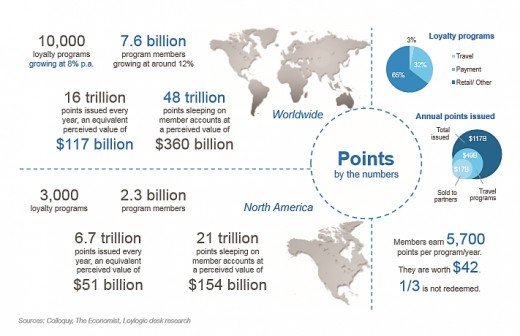After the popularization of blockchain tech through its most prominent application in cryptocurrencies, fintech companies and major retailers are taking it one step further.
Out of the countless potential applications, the millennial technology is disrupting an age-old artifact – the ubiquitous yet traditional loyalty programs.

Blockchain replaces the core of its existing mode of operation, the following is how retailers are reinventing the tradition customer reward system.
Traditional vs Blockchain Loyalty Programs
Back in the 19th century, American retailers gave customers redeemable coins. It served the purpose but proved to be costly, hence the evolution to loyalty and membership cards.
But now, even the handy cards are facing extinction as a more advanced model is readily available on the market, and these blockchain based programs are far more superior and reliable.
Challenges with Traditional Loyalty Programs
Here are the challenges associated with traditional loyalty programs and how blockchain comes in handy:
Too many cards
The card itself if not the problem, the sheer volume of them is.
Traditional programs offer a card for every brand or department store. To enjoy different rewards, the heterogeneously ‘loyal’ customer must carry around a wallet stuffed full of cards that are used infrequently. This cumbersome arrangement is one of the reasons why it’s time’s up for the cards.
Blockchain technology elegantly replaces the need for physical cards. With the new model, your rewards will be easily accessible with a smart phone.
Loyalty in the form of tokens
Traditional loyalty programs come with a caveat – you cannot claim rewards from multiple brands with a single account. Brands thrive on various reward systems, so it’s not possible for them to share a common system, unless rewards are converted into tokens and stored in a combined account.
That’s how Blockchain revolutionizes loyalty programs.
Democratizing Loyalty Programs
Previously, rewarding customers for their loyalty through a well-established, point-based loyalty program is thing of luxury among businesses, exclusive only to resourceful companies with the technological advancement, funds and staffing to develop and maintain one.
The good news is, blockchain has made starting a loyalty program accessible to smaller enterprises, democratizing this indispensable tool that helps businesses grow.
Loyalty Programs Trend Analysis
In 2017, LoyaltyOne valued the rewards to be redeemed in customer’s accounts across the industry at $360 billion. Unfortunately, the accumulated rewards sleep in customer accounts from different subscriptions and fails to prompt repurchases on the customer’s end.
Why? Research shows that an average consumer participates in multiple programs, perhaps too many for them to even keep track of. Even if they are aware of their points, the other more significant reasons for neglect are:
- Demanding conditions for redemption
- Insufficient knowledge on the balance and value of the points
- Points are not mutually interchangeable
Reason 2 and 3 can be easily resolved with Blockchain. Liquidity is a major selling point of this Loyalty Program revolution. With liquid rewards, members and businesses can trade with each other with ease. The Unify Rewards (UR) program is making that a reality. Not only does this feature itself encourage increased engagement and spending, customers will now earn points in the form of cryptocurrencies, which is something that up to 86% of participants prefer to gain in a study by the same company behind UR.
But, this disruption is not without cons. There are certain risks to retailers by adopting this new mode of operation, namely the lost of a lock-in effect with liquid and transferable tokens, as it does not tie customers to specific brands anymore. Will this downfall deter businesses from jumping on the bandwagon? Time will tell. But by the looks of it, the trending technology will benefit the retail industry as a whole.
Future of Blockchain loyalty Programs
The future is here. Several notable retailers have adopted blockchain loyalty programs in their way of operation, and here are some of the examples:
- EZ Rent a car has a system for redeeming points for digital currency
- Aviation has seen Singapore Airline, Cathay Pacific investing in blockchain loyalty application.
- Chanticleer restaurant holding group announced to expand its loyalty program this year. And Burger King has its program operational with Whoppercoin
- Latteso, a coffee brand started its program with qiibee across its continental locations.
- Companies like BitRewards have been started to offer merchants a way of rewarding their customers.
Some benefits of adopting this technology in a business’ everyday operation include:
- Reduced cost in system management by using smart contracts to track and report transactions
- Instant and secure transactions in near real time
- Longevity of tokens as the market value does not depreciate or expire over time
- Liquid system in which the consumer gets awarded globally-recognized tokens anywhere
- Multi-channel redemption across various industries with the program in place
Blockchain is a marvel at what it is creating in the retail world. Excited about this new and innovative application of Blockchain tech?
Hunt down these international retailers to earn, redeem, trade and store your shopping tokens!

Congratulations @mistageek! You have completed the following achievement on the Steem blockchain and have been rewarded with new badge(s) :
Click here to view your Board of Honor
If you no longer want to receive notifications, reply to this comment with the word
STOPDo not miss the last post from @steemitboard:
Downvoting a post can decrease pending rewards and make it less visible. Common reasons:
Submit
Congratulations @mistageek! You received a personal award!
You can view your badges on your Steem Board and compare to others on the Steem Ranking
Do not miss the last post from @steemitboard:
Vote for @Steemitboard as a witness to get one more award and increased upvotes!
Downvoting a post can decrease pending rewards and make it less visible. Common reasons:
Submit